The pottery of ancient Greece has provided us with some of the most distinctive pottery shapes and striking decoration from antiquity. This collection begins with the Minoans whose love of the sea and flowing, vibrant forms can be seen on the famous Marine Style askos. In the archaic period geometric designs gained popularity until designers eventually began to experiment with human figures. These would become more and more expressive and detailed with the black-figure style which first appeared in Corinth and then spread across Greece. Finally, the red-figure style added yet more details and greater variety in colours to pottery decoration and saw more ambitious attempts made at achieving depth and perspective. For more on this fascinating subject see Ancient History Encyclopedia’s definition on Greek pottery.
Minoan Pottery

Minoan Octopus, New-Palace period (1500-1450 BCE) Cretan Clay askos with ‘Marine Style’ decoration, Heraklion Archaeological Museum, Crete.
Archaic Pottery
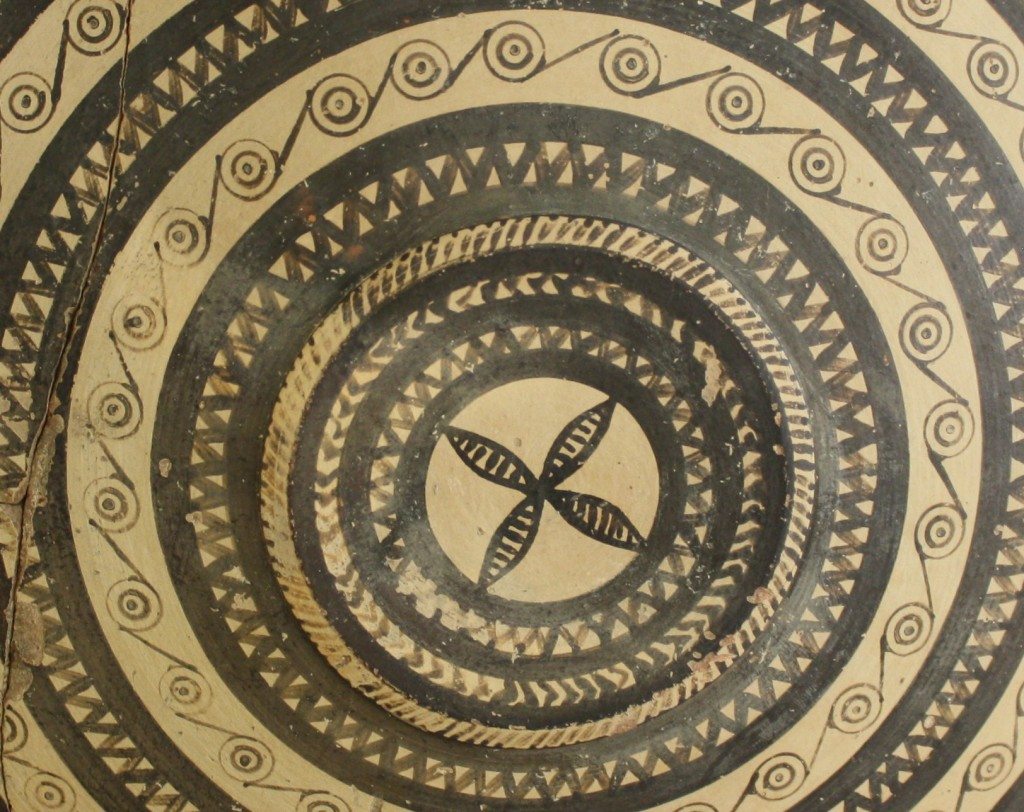
A geometric plate, 8-7th century BCE, Thira. Archaeological Museum of Thera, Santorini, Greece.
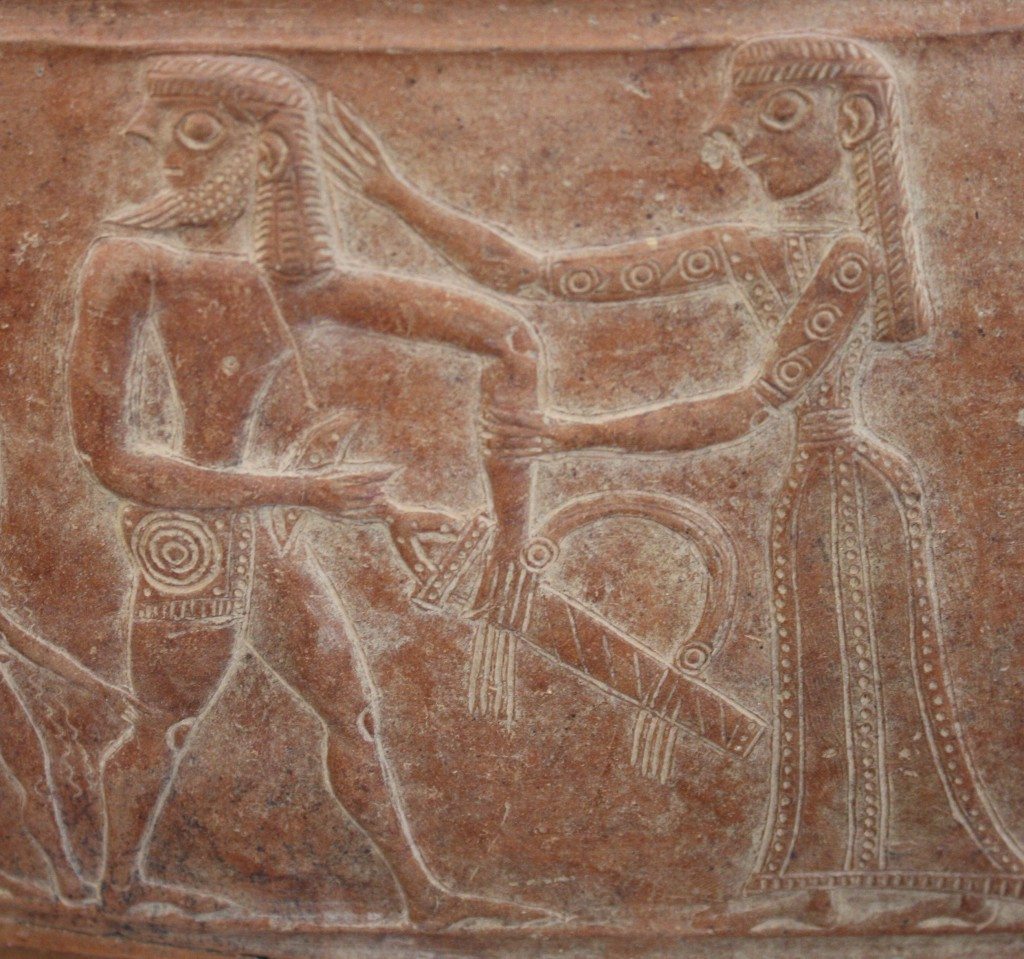
Trojan War warrior. A detail from the pithamphora of Mykonos, 7th century BCE. Archaeological Museum of Mykonos, Greece.
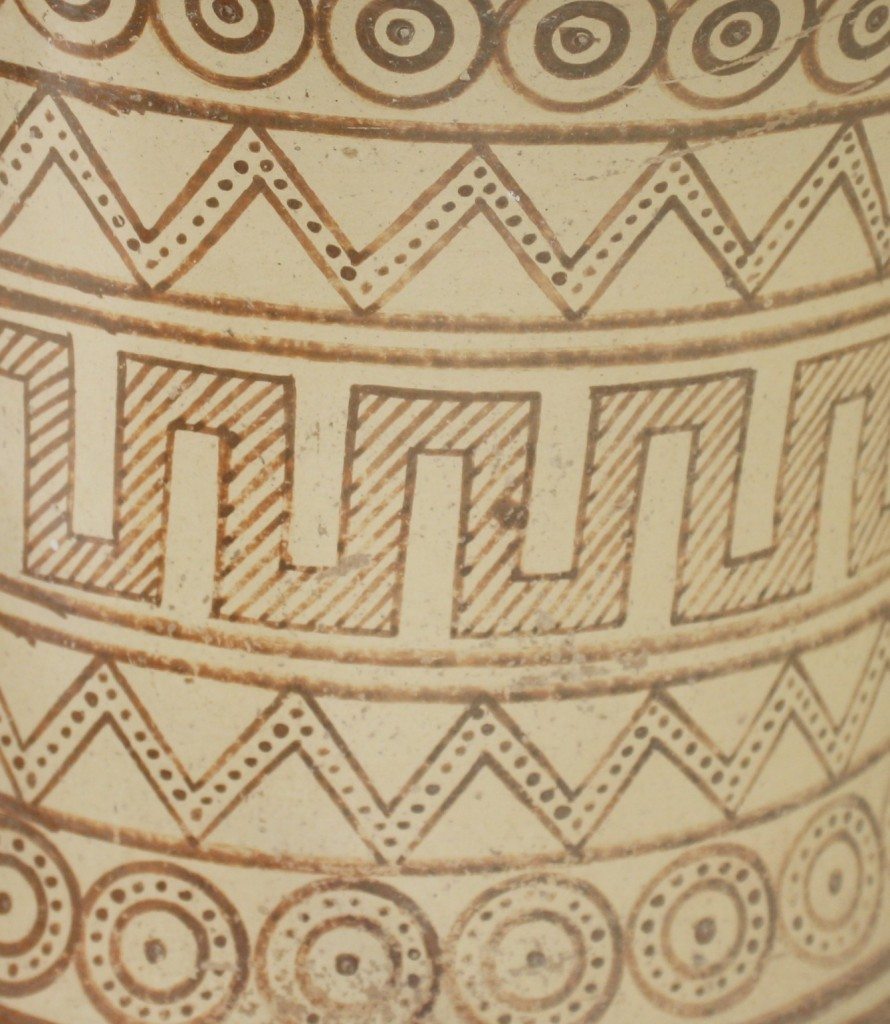
A detail of a 7th century BCE amphora displaying the common design motifs of the Geometric style of Greek pottery. The style was in use from 900 to 600 BCE in the Greek world and involved decorating vessels with simple linear motifs and stylised figures. From ancient Thera, Santorini. Archaeological Museum, Thera. Santorini, Greece
Black-figure Pottery
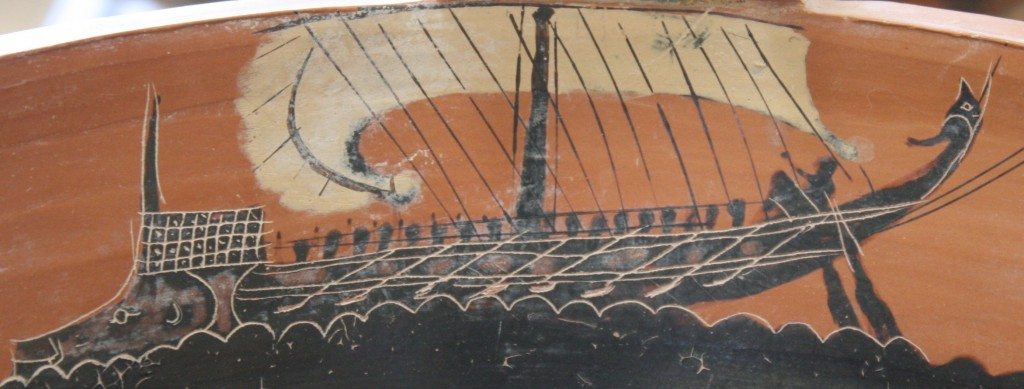
A detail of an Attic black-figure krater with four ships on the inner rim. When the krater was full it seemed as if the ships were sailing a sea of wine. 6th century BCE, Thira. Archaeological Museum, Thera, Santorini, Greece.
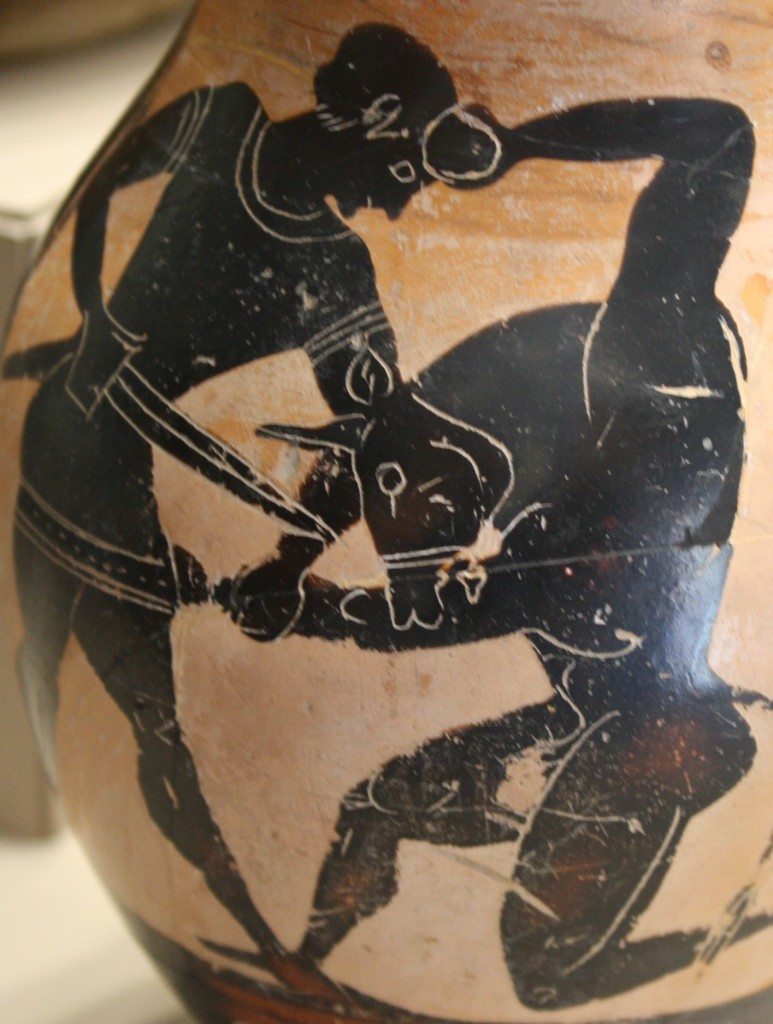
Greek black-figure amphora with Theseus and the Minotaur. 6th century BCE, Archaeological Museum, Milan, Italy.
Red-Figure Pottery

A detail from a cup depicting an owl in the red-figure style. Attributed to the Marlay painter, third quarter 5th century BCE. Archaeological Museum of Mykonos, Greece.

A boxing scene from an attic red-figure kylix (c. 500 BCE). Olympia Archaeological Museum, Greece.
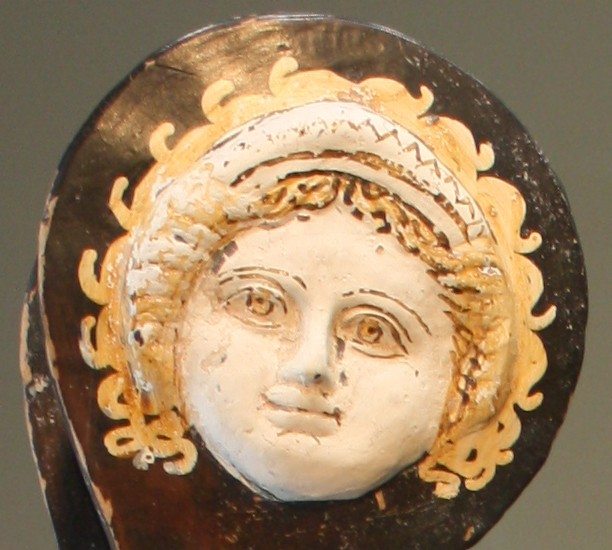
A detail of a red-figure krater handle. From Pula, southern Italy, 4th century BCE. Archaeological Museum of Milan, Italy
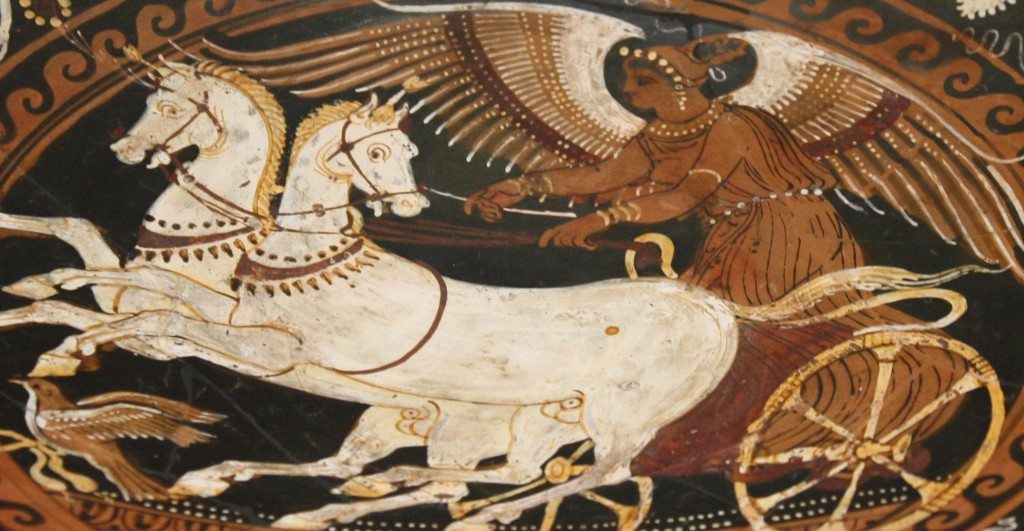
Red-figure Greek ceramic phiale or tray depicting Nike with chariot, last quarter 4th century BCE from Apula. Archaeological Museum, Milan, Italy.
All images were taken by the author and can be found on the Ancient History Encyclopedia website.
